If you are looking to get a new cat, you must have found out that the Norwegian forest cat is one of the best breeds you might get. However, there are a lot of things to know about each cat breed before you go for it.
The fact that they are cute (but let's face it - all cats are cute) does not mean they are the ones for you to commit to. That is why we have dedicated this post to covering all grounds on the Norwegian forest cat.

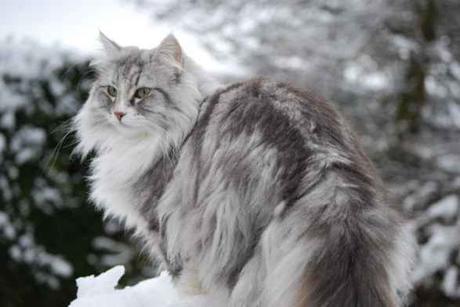
For every breed of cat, no matter how perfect they look, there are always the advantages and disadvantages to consider. There are some breed information and other main aspects of their lives that need to be examined.
Having done a lot of research on the subject of this cat breed ourselves, we have quite the information base to make you an authority on the subject.
Either you are looking to get one for yourself or just looking for some light study on the subject, here's everything you need to know about the Norwegian forest cat breed.
Norwegian forest cat breed overall
- Adaptability - High
- Grooming - Below average
- Health - Average
- All Around Friendliness - Average
- Exercise Needs - Average
Norwegian forest cat History
Also known as the Skogkatt in its native home of Norway, the Norwegian forest cat breed is one of the oldest cat breeds in registration today.
Originating from Northern Europe, the breed is considered one of the originals since it was not developed from any other breed. Another thing worthy of note is that due to the early environment of these cats' ancestors, they have adapted very much to suit the cold climates.
This adaptation can be seen in the way their fur is structured - a top of water-shedding hairs that are glossy to the look and feel too. The top coat is rather long and packs a wooden insulation underneath to help protect the cat against cold conditions better.
One of the myths that surround the origin of this cat is that they have been around since the age of the Vikings. It is believed that around 1000 AD, the Vikings brought some short haired and long-haired cat variants cats to Norway.
No matter where they came from though, one significant time in the history of these cats is World War II. Due to uncontrolled preservation of the species during the tie of the war, they were on the brink of extinction when an official Norwegian forest cat club was setup to establish a breeding program that would see to their sustenance of the breed.
The Norwegian forest cat is an option for those who are looking for big, strong cats to call their own. Due to their tendencies to become big though, they run the risk of obesity.
It is therefore no surprise that the breed will have such issues as kidney and heart diseases plaguing it. Other than that, though, the cat is generally healthy and has been reported to live anywhere from 14 to 16years under proper management.
One of the features that makes them different from every other cat considered friendly is that they do things on their own terms. True, a Norwegian forest cat can be a very affectionate lap cat, but they choose whether to get on that lap or not.
They are also friendly with other pets in the house to a reasonable extent. That being said, it is the other pet in the house you need to worry about most times.
Note that if it is your first time getting a Norwegian forest cat for yourself, you will want to go with an experienced person or choose a trusted breeder.
That is for no other reason than the fact that they can easily resemble other long-haired cats, especially the Maine Coon. However, there are still a ton of differences. For one, a Norwegian forest cat's expression is one of the most distinctive features.
They do not fall into the breed of cats that can be easily distinguished by a particular color or coat patter. Quite the contrary. These cats are usually a mixture of tabby brown and white, but they have also been known to occur in pure white to deep coal color variations.
Even at that, they can then come in different fur patterns and configurations - going up to as much as all of such configurations known to cats. However, there are no colourpointed Norwegian forest cats.
On the general, a Norwegian forest cat will be very quiet. Even when they meow, they do so with a low voice. Variations have been seen in those Norwegian forest cats that live with a dog though as these ones tend to develop a louder, thicker voice.
The reason is yet unknown but it could be due to naturally wanting to be ahead on the selection order. Whatever it is, one thing that is sure is that this breed requires more food than the average domestic cat.
Looking at the sheer size and expected weight at full maturity, that won't be a wonder. One other thing to note is that the males tend to grow much bigger and larger than their female counterparts.
Regardless of sex, Norwegian forest cats are very good climbers. They are genetically engineered with very strong claws which makes it easy for them to climb even rocks. If that says anything, it is that this cat will be an active one. Not too active that you need to keep up, but active enough to usually fit into your daily life and routine. Furthermore, exercise will help you reduce obesity and side effects.
If allowed to live outdoors, they tend to develop a strong instinct for hunting smaller animals (rodents, mice, birds, etc.) as prey. That is not for lack of proper feeding but subjection to their natural predispositions as obligate carnivores. The best thing is that you can stop this from happening.
In fact, the Norwegian forest cat has been one that adapts just fine to indoor lifestyle
As the name suggests, the breed is very popular in Norway as of now. In fact, they are a sort of celebrity in that region after they were named the official cat of Norway by King Olaf.
Prior to the late 1970s, these cats were properly groomed, raised and bred only in Norway. It was in 1979 that the first ever pair of these cats shipped into the United States. They were then presented to the Cat Fanciers' Association (CFA) in February of 1987, going on to achieve championship status six (6) years later
Due to their adaptation to cold regions, it is no wonder why they are also common in places such as Sweden and Iceland. For one reason or the other, they are also a common face in France. Left to us, we would say this to be due to the beauty and grace of the cats - something that the French romantics are identified with.
Norwegian forest cat highlights

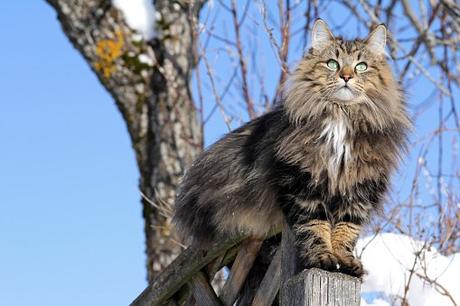
- Although they are known to be an original cat breed, the history of these cats still remains dark. They have been linked to the Vikings in stories which states that they (the Norwegian forest cat) were used to control rodents on Viking ships. When the Vikings entered Norway, the cats must have been recognized with that location, hence the name
- They are regarded as the cat of Norway after an official designation made by King Olaf
- They are referred to as the Skogcatt in Norway. That is due to the semblance of the cats to the Skogcatts in Norwegian mythology that were believed to be large, mountain-dwelling cats with the ability to climb rocks. All these are true of this breed
- During the World War II era, people only used the Norwegian forest cats for their mousing skills and never thought of breeding them. That led to a lot of crossbreeding which in the end, threatened to render the original breed extinct
- Norwegian forest cats are not only larger than most cats. They are also bigger than some small dogs!
- The natural makeup of the Norwegian forest cat makes it adaptable to cold region/ winter seasons. On the body is a woolen undercoat to serve as insulation, in the ears are tufted hairs (earmuff-esque) and the toes have furry paddings too
- It has been said that these cats are big breeds. It is therefore not surprising that they are prone to obesity and the problems (heart and kidney diseases) that comes with such
- Norwegian forest cats are not only great at climbing rocks but are excellent tree climbers too.
- The first set of Norwegian forest cats to enter the United States did so in 1979. However, they are still not part of the most popular ten cats in the region
- Norwegian forest cats are very friendly, intelligent and highly sociable pets, making them an ideal pick for a family.
Breed History
The Norwegian forest cat is one cat with a very debatable history. That is because they have a first sighting dating back to hundreds and maybe even thousands of years.
It is not even helped by the different stories which surrounds where they first came from, which other cats they could have taken their parentage from and how they finally found their way into Norway which is now known as the cat's home country.

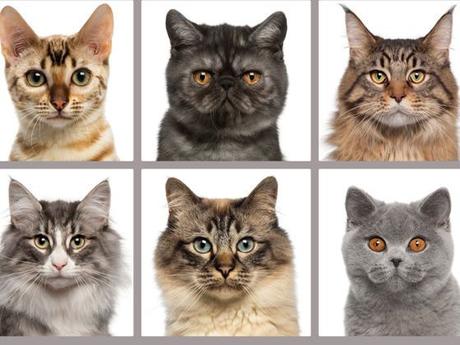
One story opines that they might be related to the longhaired cats from Russia or they could be part of the cats brought back by the Scandinavian army from Turkey. The most popular story which explains how they came into Norway argues that it was by the Vikings. As to how they were related to these Vikings, the stories suggest that they were used as mousing cats on the Viking boats.
The final argument that could be provided for their origin was one of natural selection. They could have started out as short-haired cats who, due to the harsh weather conditions of the mountains, had to adapt by growing longer furs and a thick undercoat.
They also had to have developed the special kind of fur which, rather than retain water, sheds it almost instantly.
The early Norwegian forest cat first gained recognition as a special breed in Norway where they kept their jobs as mouse hunters for farmers and villagers. For this, the people were ready to give the cat a home.
Thus, they started to spread rapidly in the country. Their commonness was even helped by the fact that they bore resemblance to a kind of cat that the Norwegians referred to as skogkatt - translating loosely to 'forest cat.'
First appearing at a cat show in Oslo (1938), the events of World War II prevented cat breeders from working towards the preservation of the cat breed. By the time they would have the chance to do so (happening in the late 1970s), the bloodline was very close to extinction.
To promote better breeding and global spread, the first two exports of Norwegian forest cats was made to the US. First recognized by the CFA, this breed has now gone on to be registered with other cat fanciers' agencies.
Norwegian Forest Cat Size

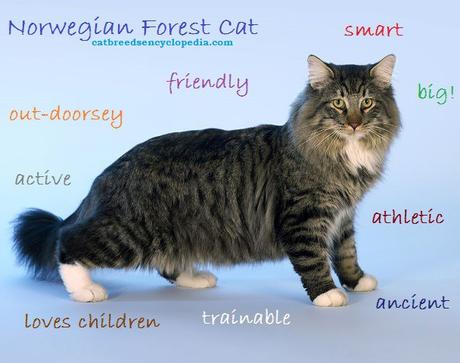
Norwegian forest cats are known to grow into very big cats. The males grow very big, reaching as much as 22 pounds. The females weight significantly lesser while both sexes are commonly slow-maturing.
However, no matter the gender, the cat breed will always have a muscular, sturdy build that establishes them as one of the strongest cat breeds - registered and unregistered.
Personality and Character
The most misleading part of the cat's name is the 'forest' in it, suggesting something that could be utterly wild. In fact, that is very far from the truth.
This is a very affectionate breed with regard for its parents (you), other people and even pets in the house. The cat is not known to get temperamental and would rarely harass you with its meows unless it really needs something.
They enjoy their own personal space like many cats but also love time with humans. More often than not, your Norwegian will dictate the rules of engagement when it comes to interacting with you.
That means they will come to you when they feel like, but they will feel like that a lot. The level of closeness will be dependent on the bonding between you and your cat.
Like most cats with a tendency to be big, they could be quite lazy. To curb this, you should look to get them their own personal space with toys. They will also benefit largely from having their own furniture in the home.
We have mentioned before that this breed is highly intelligent. You don't want to make him bored, so you should engage it in interesting games. Teach your cat tricks, give him puzzles to solve and reward him with kibbles afterwards... the whole nine yards.
Being able to identify with more than one owner at a time, they make good pets for partners and/ or families.
Health and Potential Problems
The Norwegian forest cat is known to be prone to a type of heart disease that is diagnosed as Hypertrophic Cardiomyopathy (HCM). This would not be out of place due to the large size (obesity) that these cats could reach at full maturity.

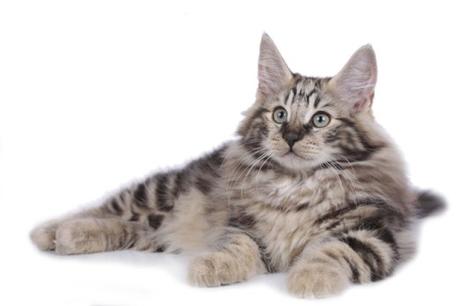
When you are at a breeder's and they tell you that their cats are free from HCM, they are not an honest set. The truth is that, no breeder can guarantee you, on any data whatsoever, that their kittens are free from such a disease in its later life.
Another hereditary disease common to this breed is hip dysplasia. It can range from a mild infection which will cause little to no pain to the cat to severe ones. The most severe cases lead to lameness in the cat. More than that, they are also prone to kidney diseases.
This should not discourage you from getting this cat. The truth is that no cat is free from health problems. Managing them the right way and taking scheduled visits to the vet will give your cat as healthy a life as they possibly can get.
Care Features
It is usually unnecessary to want to bathe your Norwegian. With the way its fur is set up to repel water, that would be difficult anyway. However, you will need to comb and brush the fur about once or twice per week.
Due to the length, there is the tendency of the fur getting tangled. When combing, be gentle enough that you don't harshly run through the matted hair and cause the cat any discomfort. Rather, work gently and untangle the lumped fur wherever it arises.
The Norwegian forest cat is built to withstand the harsh conditions of cold, so it can survive outdoors by itself. We will still strongly recommend that you keep yours indoors though. There is no telling what kinds of diseases it could get from other animals in the area.
There is also the risk of someone fancying the cat and stealing it for themselves or worse - that it gets attacked by dogs or other wild animals.
Feeding Schedule
Norwegian forest cats will take to popular cat foods in the market. Thy have quite the same nutritional requirements as other cats in the pool but need to eat more. That is understandable, given their build.
If you are concerned about the feeding habit of your cat, you could speak to a vet or pet nutritionist to draw up a solid feeding plan for your cat
Coat, Color and Grooming

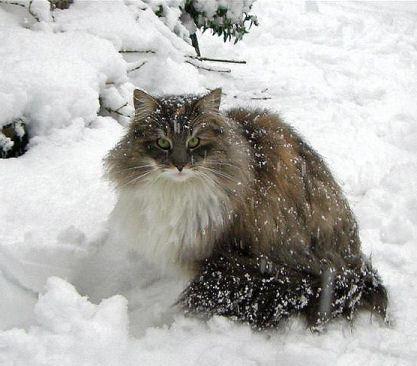
The unmistakable thing about the Norwegian forest cat is its long, flowing coat. The lushness of the coat extends as far the tail which comes in a bushy, elongated mass. When talking of elongated, know that the tails of these cats could be as long as their body length.
In the summer, it is understandable if the cat has a little bit less fur mass. That is just your cat adapting to the season. In the winter though, the thickness of their fur comes out in its full glory.
As far as colors go, you can find these cats in nearly every color combination. It is also a misconception that a Norwegian forest cat must always have the white color in its coat. The colors they don't come in at all are chocolate, lavender and lilac.
While their fur also features different kinds of patterns, there is an exception when it comes to colourpointed ones (as seen on the Siamese cats)
Children and Other Pets Compatibility
We have constantly mentioned throughout this article that the average Norwegian forest cat is a family cat. They love the attention they get from children. If they would be left alone with kids, make sure you teach the kids how to treat the cat with respect.
Likewise, if you have a dog that is either indifferent or friendly towards cats, you won't have a problem with the two of them in the household. A dog with the tendency to be aggressive should be trained in accepting the cat first though.
A kingly status in Norway, reference to mythology and a beautiful appearance to match. No wonder they are held in high regards in places where they are being discussed. Having a high intelligence to go with those mousing and climbing skills, Norwegian forest cats will make a great fit for different type of parents.
Considering getting one soon? Got one you'd like to talk about? Let's know all about it in the comments section.

